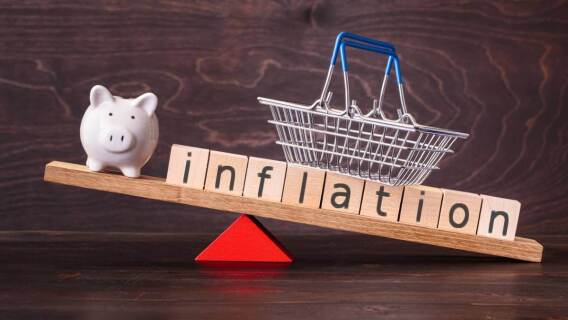As has become painfully obvious in recent weeks, inflation investing is a big challenge. But history says the pain won’t last long.
If you want to strike up conversation at your next social gathering just utter one of two sentences.
“Hey, have you guys heard about lumber prices? Holy cow!”
Or, “Man, I think inflation is here to stay. Prices on everything are going up and there’s no end in sight.”
My guess is that if even a few people hear you that you can just sit back and enjoy the show.
I’m not getting into the price of lumber today. But I do want to talk briefly about inflation - and a history of inflation investing - because it (or rather the fear of it) is responsible for a lot of the market’s action lately, especially when it comes to higher growth companies.
[text_ad]
The Great Inflation Debate: Transitory, or Here to Stay?
Stepping back far enough so we can gain some perspective on the current state of affairs in their proper historical context, it’s helpful to look back to Reagan, who was arguably the last president, prior to Trump, who consistently railed against big government.
In the decades since Reagan the federal government has gotten bigger and more involved in people’s lives. Regardless of your political views, that’s just the reality. Trump’s tenure in the White House represented a temporary break from the trend, but under President Joe Biden big government is poised to come roaring back and be bigger than ever.
While certain plans, such as the one to raise taxes on the wealthy, may offset some spending, there doesn’t seem to be any avoiding a higher deficit to cover the cumulative impact of expansive social spending programs.
Against that political backdrop, we have a global economy that shut down a year ago and is struggling to get back up and running quickly enough, and at a sufficient pace, to provide the goods and services consumers and businesses want and need. Shortages of critical supplies and parts, workers, energy and more are the result.
Add in the Biden administration’s hopes and dreams to drive higher wages, higher corporate tax rates, more climate change regulations and more power for labor unions and you get to where we are now – a growing sense that the only logical result of all this is inflation.
That all sounds pretty scary if you’re into rapid growth stocks, mainly because as the risk of inflation rises, particularly above the 4% rate, so too does the threat of Fed intervention to cool off an economy that’s begun to run too hot.
Inflation Investing: A History
While there are plenty of scenarios in which some inflation and some increase in rates are fine, if not good, for higher growth stocks, it’s all a matter of degree. Too much inflation and/or too much Fed intervention is not so good.
To call out one data point from a recent Wall Street Journal article, since the S&P 500 was created in 1957 inflation has gone above 4% nine times. In eight of those cases stocks were lower three months later.
But when it comes to the market there are, and will continue to be, exceptions.
In 2005, inflation was transitory. It soon fell below 4% and stocks were fine.
That’s the hope this time around as well. There are more than a few excellent economists who believe inflation will prove to be transitory in 2021.
Stepping back to consider what we’ve been through over the last 12 months and to reflect on what’s happening now to get the world moving again, a relatively simple scenario seems fitting. And that is transitory inflation in the 3% to 4% range for a spell, then easing some, and eventually reverting to something under 3% (at least in the foreseeable future), potentially with modest Fed intervention.
Maybe that will prove to be too rosy of a scenario. But I don’t think so.
Of course, we won’t know what happens until it’s already occurred. The market’s current gyrations reflect that uncertainty. Add in the reality that stocks still trade at relatively high valuations, that there is excess out there (crypto, meme stocks, etc.), that the pandemic is still a major issue in many areas of the world and you wind up with a pretty messy situation.
Still, it’s far better than it was a year ago, six months ago, and even three months ago. My guess is that when we look back at this time in a year or two the history books will say that since 1957 there have been two out of 10 times when a temporary uptick in inflation, to above 4%, has freaked investors out, but that months later the market was just fine, as were cool and collected investors who maintained patience and perspective as the world emerged from an earth-shattering pandemic.
Inflation investing can be tricky. But assuming we don’t get too much inflation, chances are its effects will be fleeting.
How are inflation fears impacting your investing approach? What’s your concern level? Leave us a comment below!
Editor’s Note: This post was excerpted from the latest issue of Cabot Early Opportunities.
[author_ad]

